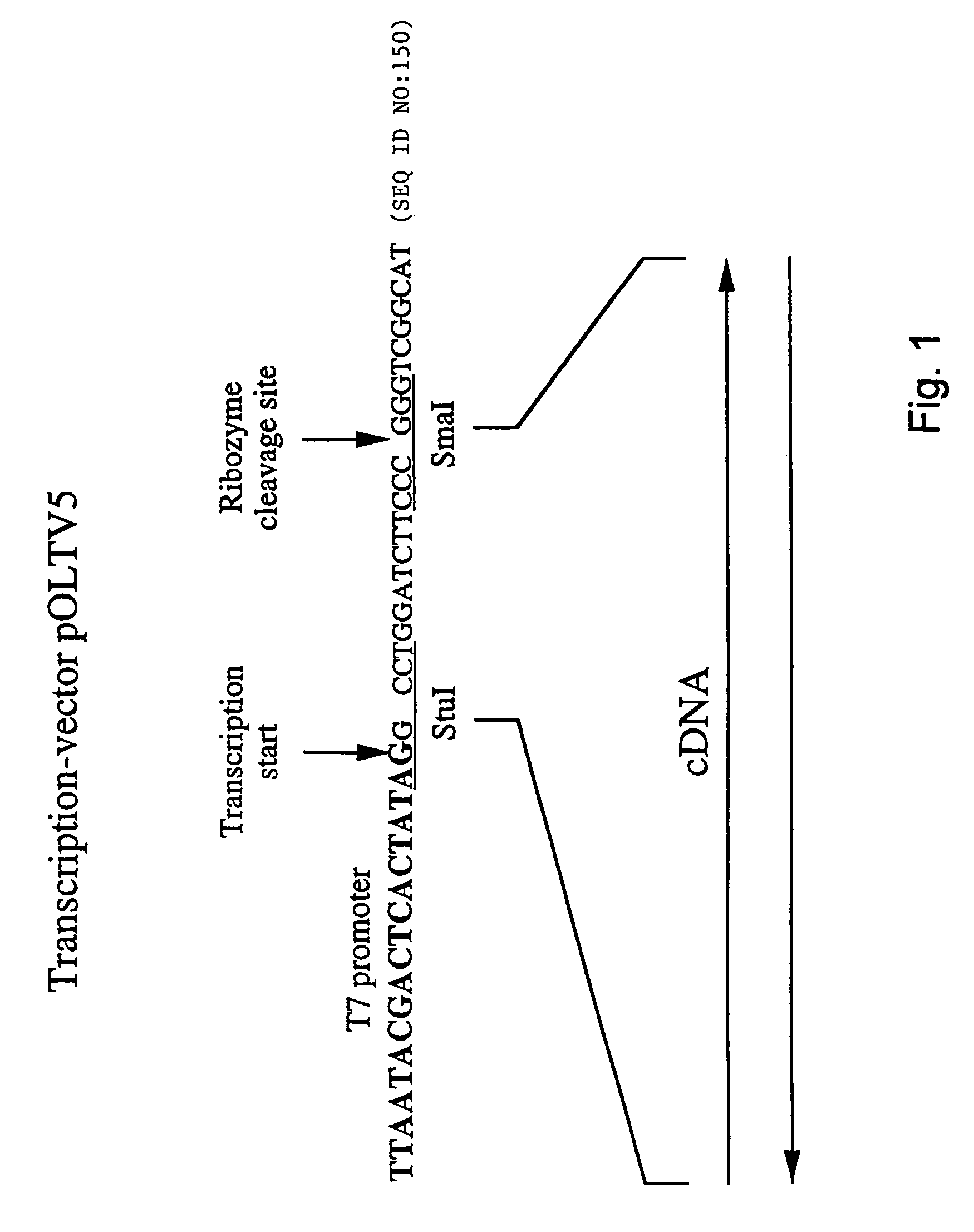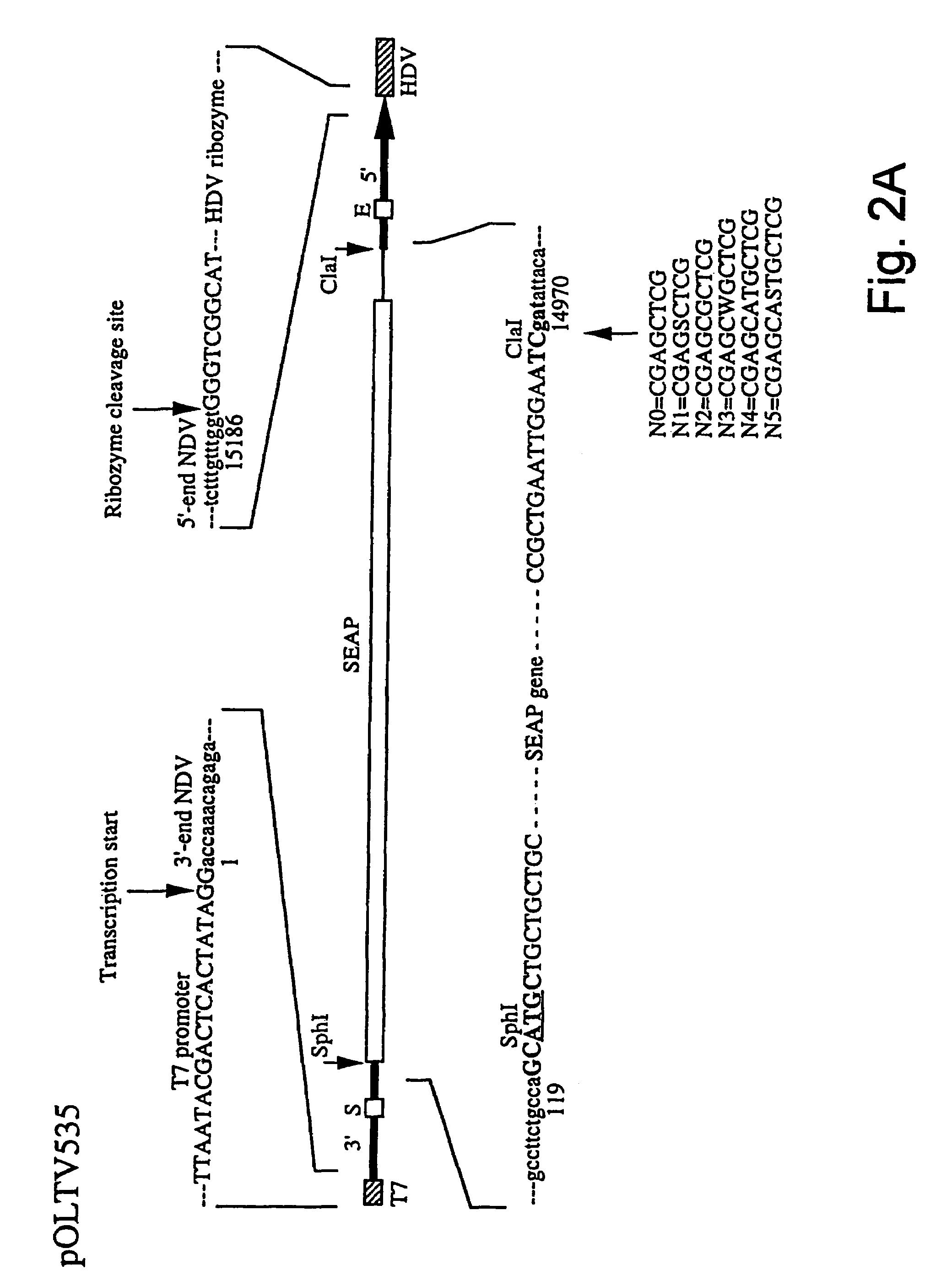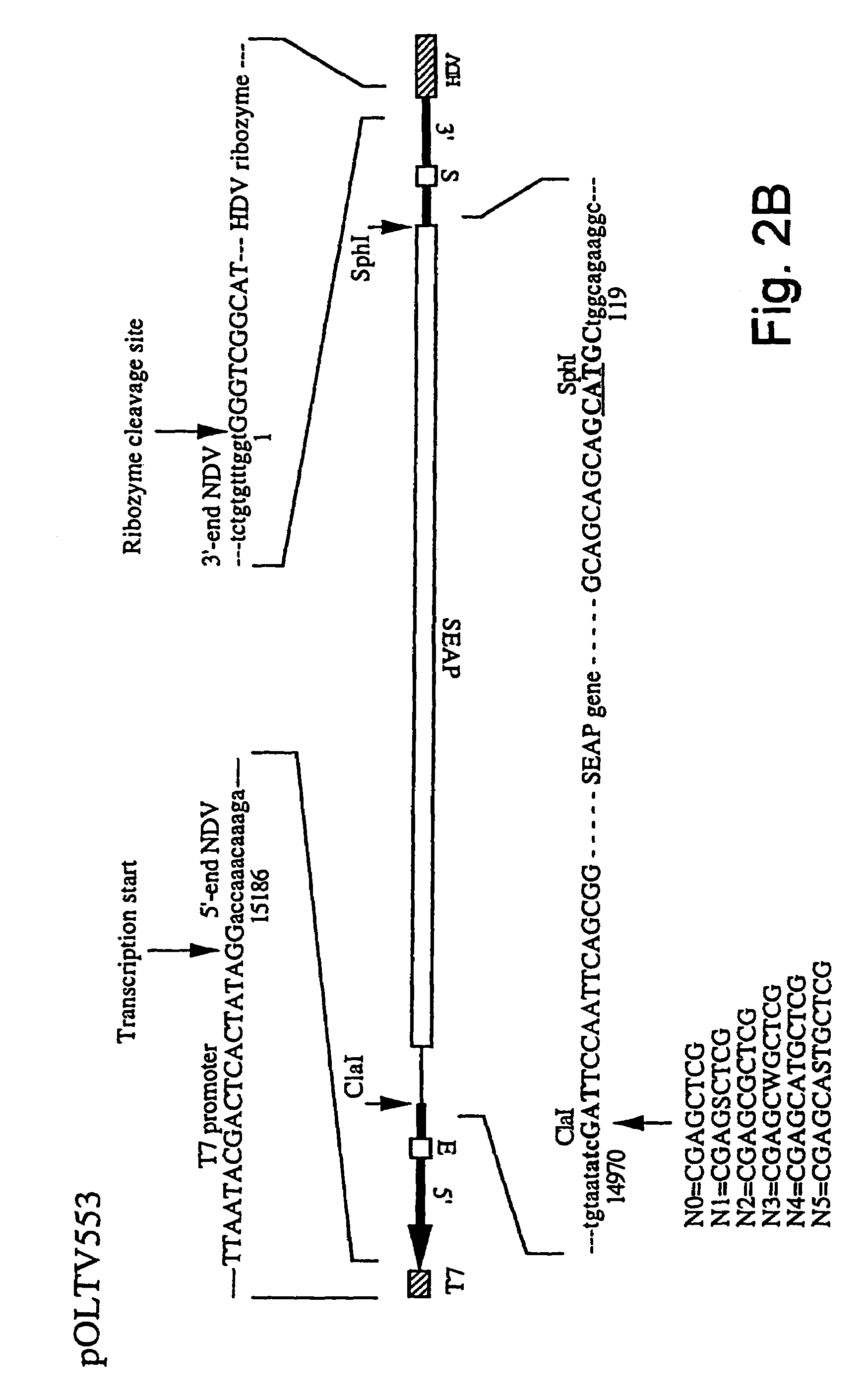Newcastle disease virus infectious clones, vaccines and new diagnostic assays
a newcastle disease virus and infectious clone technology, applied in the field of biotechnology, can solve the problems of not being able to generate minigenome fragments or plasmids, and achieve the effects of potent immune response, enhanced immune-stimulating properties of ndv, and potent immune respons
- Summary
- Abstract
- Description
- Claims
- Application Information
AI Technical Summary
Benefits of technology
Problems solved by technology
Method used
Image
Examples
Embodiment Construction
Experimental Part
Materials and Methods
[0121]Standard cloning procedures were carried out according to Sambrook et al. (1989) unless stated otherwise. All constructions involving DNA fragments which were generated by means of the polymerase chain reaction (PCR) were verified by sequence analysis. In the primer sequences given below, the underlined nucleotides correspond to NDV sequences and the position within the NDV genome is indicated. The nucleotide sequence of restriction sites which were used for cloning are indicated in boldface.
Cells and Viruses
[0122]CER cells (Smith et al., 1976) were grown in GMEM / EMEM (1:1) containing 5% fetal calf serum and 2% of an antibiotic mix that contained 1000 U / ml Penicillin, 1000 μg / ml Streptomycin, 20 μg / ml Fungizone, 500 μg / ml Polymixin B, and 10 mg / ml Kanamycin. QT35 cells (Moscovici et al., 1977; Cho, 1982) were grown in medium supplied by GibcoBRL / Life Technologies (cat. no. 041-91536; proprietary composition of Fort Dodge Labs, Ft. Dodge, I...
PUM
| Property | Measurement | Unit |
|---|---|---|
| pH | aaaaa | aaaaa |
| pH | aaaaa | aaaaa |
| pH | aaaaa | aaaaa |
Abstract
Description
Claims
Application Information
 Login to View More
Login to View More - R&D
- Intellectual Property
- Life Sciences
- Materials
- Tech Scout
- Unparalleled Data Quality
- Higher Quality Content
- 60% Fewer Hallucinations
Browse by: Latest US Patents, China's latest patents, Technical Efficacy Thesaurus, Application Domain, Technology Topic, Popular Technical Reports.
© 2025 PatSnap. All rights reserved.Legal|Privacy policy|Modern Slavery Act Transparency Statement|Sitemap|About US| Contact US: help@patsnap.com



